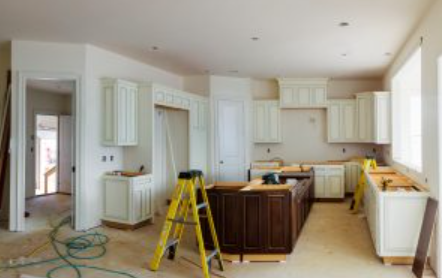Renovating your home can be exciting, but unforeseen challenges can arise and derail your plans. That’s why knowing and addressing the following home renovation issues will help keep your project on track and within budget.
1. Starting renovations too soon
Renovating a space is exciting, but starting before you’re ready can lead to unexpected expenses, delays, and unsatisfactory outcomes.
For example, if you skimp on research and planning, you might miss important details such as budget limitations, necessary permits, or structural requirements.
Rushing into renovations can lead to hasty decision-making, resulting in regrettable choices in materials or design. This could mean you end up with a space that doesn’t meet your expectations or requires costly changes later on.
Taking the time to carefully plan and prepare before starting renovations is crucial for a successful outcome, ensuring that your project progresses smoothly and meets your expectations in the long run.
2. Underestimating costs
Underestimating costs is a common pitfall many homeowners face when they start a remodeling project.
It’s easy to get swept up in the excitement of creating your dream space and overlook the actual expenses involved.
From materials and labor to unforeseen issues and permits, the costs of a renovation can quickly add up.
Underestimating these expenses can leave you scrambling to find additional funds mid-project or forced to compromise on quality to stay within budget.
To avoid this pitfall, it’s essential to do your research, obtain accurate quotes from contractors, and factor in a buffer for unexpected expenses.
Realistically assessing the costs upfront is crucial in ensuring your renovation stays on track. By doing so, you can avoid being caught off guard by unexpected expenses and ensure your budget is sufficient for the project.
3. Expecting everything to go according to plan
Expecting everything to go according to plan is a common but risky mindset when undertaking a remodeling project.
While careful planning is essential, it’s crucial to acknowledge that renovations often come with unexpected twists and turns.
From delays in materials delivery to unforeseen structural issues, many things can derail even the most meticulously crafted plans.
When you expect everything to go smoothly, you will inevitably become frustrated and disappointed when the first obstacle comes along.
Approach renovations with flexibility and a willingness to adapt. By anticipating potential challenges and having contingency plans in place, you can navigate the ups and downs of the remodeling process with less stress and ultimately achieve the renovation you’re after.
4. Hidden Issues Uncovered During Demolition
Another common factor that can impede your progress is discovering unexpected issues once you’ve opened up walls, floors, or ceilings.
Things like previous water damage, shoddy original construction, outdated wiring or plumbing that needs replacing, asbestos or lead paint hazards, termites, and more can derail the project timeline and budget.
Doing thorough inspections beforehand helps, but sometimes, issues are simply hidden until revealed during the demolition phase.
5. Cutting Corners on Prep Work
Properly prepping surfaces, like cleaning, patching, priming, etc., before installing new materials is critical.
Cutting corners to save time and money won’t give you the results you’re after and could lead to premature failures, such as your new flooring peeling up, drywall cracks, paint problems, and more.
Be methodical, and don’t rush the prep phases.
6. Choosing Low-Quality Materials
While it’s tempting to use lower-quality materials to save on renovation costs, your future self will not be pleased with the results.
Especially when you try to cut costs on high-wear areas like flooring, countertops, fixtures, etc.
Low-grade products simply won’t hold up over time compared to mid-range or upper-tier options. Do your research on materials and aim for a balanced mix of quality and value.
7. Improper Spacing Around Home Systems
Proper spacing and access are crucial for future maintenance and repairs when renovating areas around home systems like HVAC, plumbing, ductwork, and electrical panels.
Avoid burying these systems behind finished walls or building tightly around them without access panels or adequate room to service components down the road. Think ahead to save big headaches later.
8. Neglecting Ventilation Needs
Kitchens, bathrooms, and other high moisture areas need proper ventilation through windows, fans, or other systems to control humidity and prevent mold, mildew, warping, and other damage over time. Don’t overlook these ventilation requirements during your renovation planning.
9. DIY Disasters
DIY projects can be a fun way to save money and put your personal touch on your home. However, tackling projects beyond your skill level can result in costly mistakes. Know when to call in the professionals to avoid DIY disasters that could end up costing you more in the long run.
By being aware of these potential home renovation pitfalls and taking proactive steps to address them, you can ensure that your remodeling project not only looks beautiful but also stands the test of time.
How To Add Value to Your Home with These Renovations
5 Home Renovations That Can Boost Your Home’s Value
How to Fund Your Project: HELOC vs. Home Improvement Loan or Other


